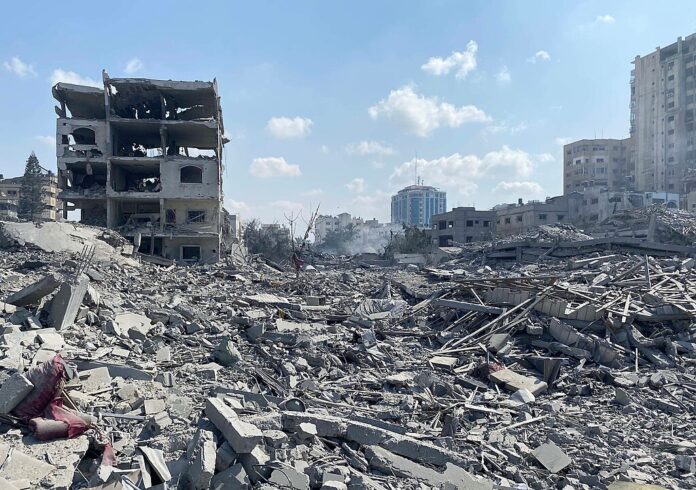US President Donald Trump’s policy announcement last week appeared to take everyone by surprise. He declared that when the war between Israel and Hamas is finished, the territory of Gaza should be handed over to the United States, its Palestinian population relocated elsewhere, and the Americans will rebuild it and turn it into a “Middle Eastern Riviera”.
The announcement has been generally dismissed as illegal, immoral and impractical.
What does the Bible have to say about Gaza? The territory features prominently – both in accounts of events in Bible times, and in prophecies of the future. In the time of the Old Testament, Gaza was the name of a city in Philistia. Philistia was a territory on the Mediterranean coast which corresponds pretty well to the modern Gaza Strip. The inhabitants of Philistia were the Philistines, who are thought to have arrived there from Crete, before Israel arrived in Canaan from Egypt (as related in the books of Exodus to Joshua). The Philistines’ territory was within the Promised Land which God gave to Israel, but because of the Philistines’ technological and military superiority they maintained their independence throughout much of the history of the Israelite kingdom. The Philistines were bitter enemies of the Israelites.
Modern Gazans are not related to the ancient Philistines, but it’s apparent that when Philistia features in prophecies of our day, it’s a reference to what we know as the Gaza Strip. Here are just three Bible prophecies which give us clues as to what the future holds for Gaza.
Psalm 83 concerns a conspiracy against Israel by ten neighbouring nations, including Philistia, who say, ‘Come, let us wipe them out as a nation; let the name of Israel be remembered no more!’ (v. 4). The scenario does not fit any time in history so far and therefore is obviously still future. The Psalm is a plea for help from God (an attitude that’s very different from the current Israeli state’s self confidence).
Joel 3 describes a multinational invasion of Israel, which brings it to its knees. The nation is delivered – not by its own prowess, but by God: ‘The LORD roars from Zion, and utters his voice from Jerusalem, and the heavens and the earth quake. But the LORD is a refuge to his people, a stronghold to the people of Israel’ (v. 16). Putting this alongside other prophecies (for example Zechariah 14:3-4), it’s apparent that this is describing the appearing of Jesus Christ. Joel 3 culminates in the establishment of God’s Kingdom (v. 21).
So what about Gaza? There are various details of the prophecy whose meanings aren’t clear, and probably won’t be until after they’ve happened. In verses 4-8 God issues a challenge to ‘Tyre and Sidon, and all the regions of Philistia’ (Tyre and Sidon are in Lebanon). It appears from v. 8 that as the final battle approaches some of their population will be deported to Sabea (which is in the region of modern Yemen).
Ezekiel chapters 40-48 give a detailed picture of the layout of the land of Israel and the temple at its centre in the Kingdom of God, after the return of Jesus Christ. It describes the territory, and it includes the Gaza Strip (47:19-20). God says, ‘You shall divide this land among you according to the tribes of Israel. You shall allot it as an inheritance for yourselves and for the sojourners who reside among you and have had children among you. They shall be to you as native-born children of Israel. With you they shall be allotted an inheritance among the tribes of Israel’ (47:21-22).
In the Kingdom of God, a chastened and reformed nation of Israel will enjoy the blessing of peace and prosperity under Christ’s righteous rule – along with people from all nations (Genesis 26:4). The ruined Gaza Strip will be transformed. Not by the Americans, or the Israelis or the Palestinians, but by God.
Chris Parkin
Picture credit: Wafa in contract with APAimages, CC BY-SA 3.0

